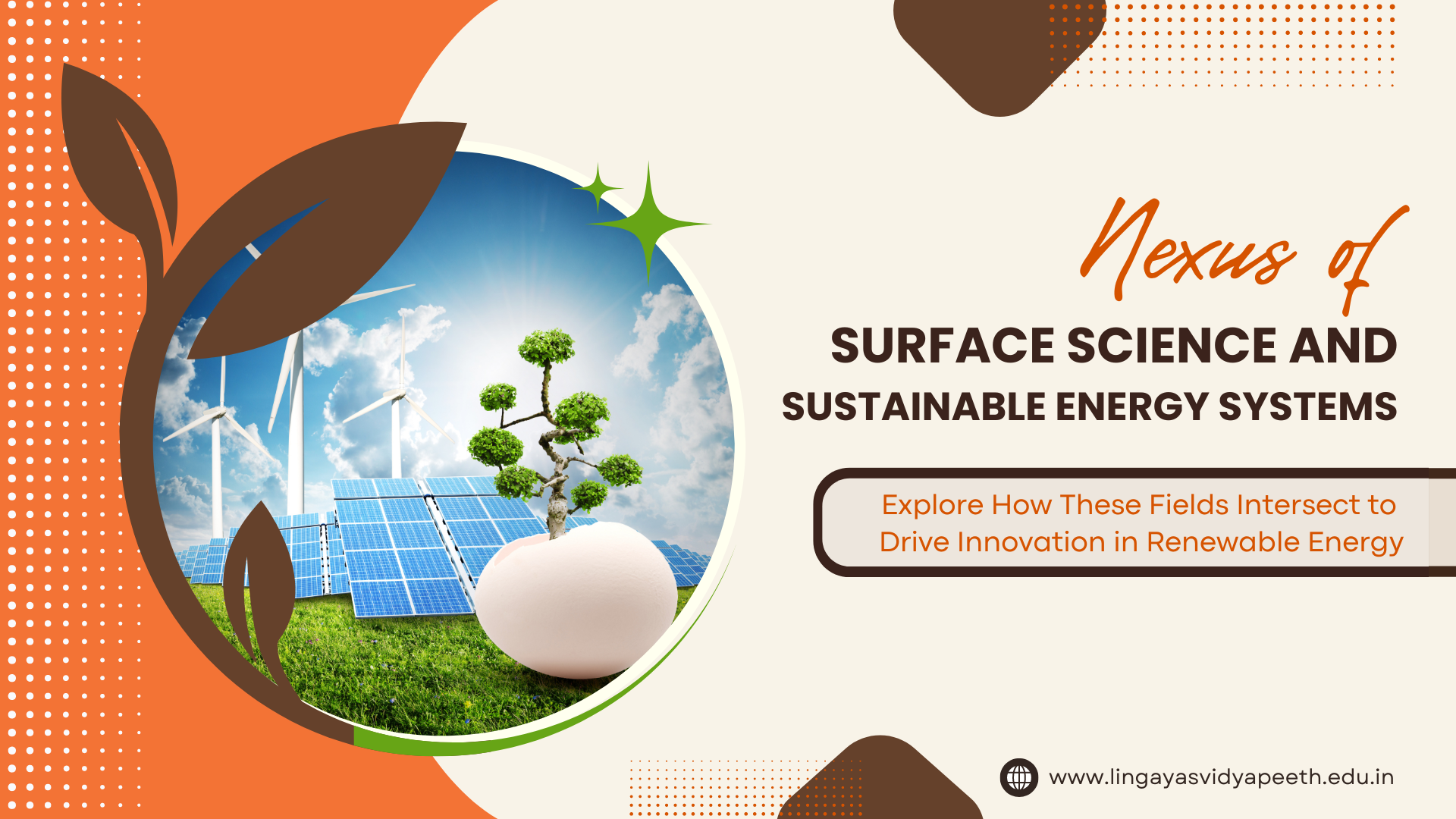Home » Nexus of Surface Science and Sustainable Energy Systems | Guide Here

The nexus between surface science and energy systems appears as a ray of hope in the pursuit of a more sustainable and environmentally friendly future. Scientists are looking to novel approaches based on a basic understanding of surface qualities and their function in energy conversion, storage, and usage as humanity struggles with the issues of climate change and environmental degradation.
The multidisciplinary area of surface science explores the atomic and molecular details of surfaces and interfaces at the intersection of materials science, engineering, physics, and chemistry. It offers vital information about how materials behave with gases, liquids, or solids, and it gives a deep comprehension of surface interactions, catalysis, and energy transfer. The three key requirements of sustainable energy systems are affordability, environmental friendliness, and efficiency.
IoT Based Environmental Monitoring System
Optimizing the processes involved in energy conversion and storage is crucial, whether using renewable energy sources like solar and wind power or cutting-edge technology like hydrogen fuel cells and sophisticated batteries. Here, surface science is crucial in improving the efficiency and durability of energy devices by customizing surface characteristics to satisfy demands.
Solar energy holds immense promise as a clean and abundant source of power. Thin-film solar cells, in particular, rely on precise control of surface morphology and interface engineering to maximize light absorption and charge carrier transport. By manipulating surface textures and interfaces, researchers are pushing the boundaries of efficiency and durability in photovoltaic technologies.
Catalysts are central to many energy conversion processes, from hydrogen production via water splitting to carbon dioxide reduction and ammonia synthesis. Surface science enables the design of catalytic materials with tailored active sites and electronic structures, leading to more efficient and selective reactions while minimizing energy losses and waste generation.
Water repelling Surfaces and Its Applications
Whether it’s lithium-ion batteries for electric vehicles or grid-scale storage solutions, surface properties profoundly influence the performance and cycling stability of energy storage devices. Advances in surface coating technologies, electrode materials, and electrolyte interfaces are enhancing the energy density, safety, and lifespan of batteries, paving the way for widespread adoption of renewable energy sources.
Hybrid Thermionic-Thermophotovoltaic Conversion device
Hydrogen fuel cells offer a clean and versatile alternative to traditional combustion engines, with applications ranging from transportation to stationary power generation. Surface science plays a crucial role in optimizing the kinetics of electrochemical reactions at the fuel cell electrodes, improving efficiency and reliability while reducing costs associated with precious metal catalysts.
Mitigating carbon emissions from industrial processes and power generation facilities is a pressing global challenge. Surface science contributes to the development of novel adsorbent materials and catalytic systems for capturing CO2 from flue gases and converting it into valuable products such as fuels, chemicals, and building materials.
In summary, the union of sustainable energy systems with surface science offers future generations the prospect of a healthier and wealthier future. Our knowledge of surface phenomena and molecular interactions can be used to open up new avenues for the development of effective, sustainable energy systems that will slow down global warming and promote wealth. Let us not waver in our resolve to harness the power of surfaces for a sustainable future as we continue to push the limits of scientific research and technological innovation.
From
Dr. Konica Sharma
Assistant Professor
School of Basic and Applied Sciences
Lingaya’s Vidyapeeth
Best Science College in Faridabad
Lingayas Vidyapeeth is the best college in Faridabad for B.Sc in Chemistry, Physics, Mathematics, and Biotechnology and M.Sc in Chemistry, Physics, Mathematics programs. Offering comprehensive curriculums, experienced faculty, and modern laboratories, Lingaya’s Vidyapeeth ensures a top-notch education, equipping students with the skills and knowledge needed for successful careers in these fields.
RECENT POSTS
CATEGORIES
TAGS
Agriculture Agriculture future AI Architecture Architecture design artificial intelligence BA Psychology BTech CSE BTech Engineering Business management career Career-Specific Education career guide Career Opportunities career option career scope Civil engineering commerce and management Computer Science Computer science engineering Data science degree education Engineering Engineering students English Literature english program Exam tips Fashion Design Fashion design course Higher Education Journalism journalism and mass communication law Law career Machine Learning MA Psychology Master degree mathematics MBA Mechanical Engineering Pharmacy Psychology Research and Development students
University Address: Nachauli, Jasana Road, Faridabad, Haryana
Toll Free: 1800-120-4613
Mobile : 8447744303 | 8447744304 | 8447744306 | 8447744309
Address: C-72, Second Floor, Shivalik, Near Malviya Nagar,
Above HDFC Bank, New Delhi 110017
Ph.No. - 011-46570515 / 45138169 / 41755703 / +91-7303152412
Jagmani Kutir, Ground Floor, Road No-1, Rajeev Nagar,
Near Darbar Marriage Hall, Patna-800024, Bihar
Contact No: 9818352069/ 8130120095
Mail: kanhaiya@lingayasvidyapeeth.edu.in
Copyrights © 1998 - 2025 Lingaya's Vidyapeeth (Deemed To Be University). All rights reserved.
It is important to note that the following email IDs and domains are fraudulent and do not belong to our university.
LV only conducts physical/online verification of any document related to examination on the following email id: